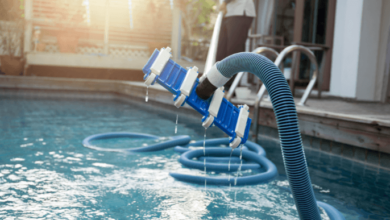What are the best practices for riding in different weather conditions?

Introduction
Riding in various weather conditions presents unique challenges and opportunities. Whether you’re navigating through rain, snow, fog, wind, or extreme heat, understanding the best practices can make a significant difference in your safety and comfort. This comprehensive guide will explore the essential tips and strategies for riding in different weather conditions, ensuring you are well-prepared for any situation.
Best Practices for Riding in Rain
Riding in the rain requires heightened awareness and caution. Wet roads can be slippery, reducing traction and increasing the risk of accidents. To ride safely in the rain, it is essential to:
- Wear Waterproof Gear: Invest in high-quality waterproof clothing, gloves, and boots to stay dry and comfortable.
- Use Anti-Fog Visors: Ensure your helmet has an anti-fog visor to maintain clear visibility.
- Slow Down: Reduce your speed to allow more time for braking and maneuvering.
- Increase Following Distance: Maintain a greater distance from other vehicles to account for longer stopping distances.
- Avoid Sudden Movements: Make smooth and gradual movements to prevent skidding.
- Stay Visible: Use reflective gear and keep your lights on to ensure other drivers can see you.
Best Practices for Riding in Snow
Riding in snowy conditions can be particularly challenging due to reduced traction and visibility. Here are some best practices for riding in snow:
- Use Winter Tires: Equip your bike with tires designed for snowy and icy conditions.
- Dress in Layers: Wear multiple layers to stay warm and insulated against the cold.
- Keep Your Bike Clean: Regularly clean your bike to remove salt and grime that can cause corrosion.
- Reduce Speed: Slow down to maintain better control over your bike.
- Avoid Sudden Braking: Use both brakes gently to avoid skidding.
- Stay Alert: Be extra cautious of black ice and other hidden hazards on the road.
Best Practices for Riding in Fog
Fog can severely limit visibility, making it difficult to see other vehicles and obstacles. To ride safely in foggy conditions:
- Use Low Beams: Use low beam headlights to reduce glare and improve visibility.
- Wear Reflective Gear: Increase your visibility to other drivers with reflective clothing and accessories.
- Use Fog Lights: If your bike is equipped with fog lights, use them to enhance your visibility.
- Reduce Speed: Ride at a slower pace to give yourself more time to react.
- Listen Carefully: Use your ears to detect other vehicles that may be nearby but out of sight.
- Stay in Your Lane: Avoid changing lanes unnecessarily to reduce the risk of collisions.
Best Practices for Riding in Wind
Strong winds can make riding unstable and unpredictable. Here’s how to manage riding in windy conditions:
- Maintain a Firm Grip: Hold the handlebars firmly to maintain control over your bike.
- Lean into the Wind: Lean slightly into the wind to counteract its force.
- Be Prepared for Gusts: Anticipate sudden gusts of wind and be ready to adjust your balance.
- Avoid Large Vehicles: Stay clear of large trucks and buses that can create turbulence.
- Use Your Core: Engage your core muscles to stabilize yourself against the wind.
- Stay Relaxed: Keep your body relaxed to absorb wind gusts more effectively.
Best Practices for Riding in Extreme Heat
Riding in extreme heat can lead to dehydration and heat exhaustion. To stay safe in hot weather:
- Stay Hydrated: Drink plenty of water before, during, and after your ride.
- Wear Light Clothing: Choose lightweight, breathable clothing to stay cool.
- Use Sunscreen: Protect your skin from sunburn with high SPF sunscreen.
- Take Breaks: Stop regularly to rest and cool down in the shade.
- Plan Your Route: Choose routes with plenty of shade and rest stops.
- Avoid Peak Heat Hours: Ride during cooler parts of the day, such as early morning or late afternoon.
Essential Gear for Riding in Various Weather Conditions
Having the right gear is crucial for riding in different weather conditions. Here are some essential items to consider:
- All-Weather Jacket: A versatile jacket with removable liners for varying temperatures.
- Heated Gear: Heated gloves, jackets, and grips for riding in cold weather.
- Cooling Vests: Vests designed to keep you cool in extreme heat.
- Waterproof Boots: Durable boots that protect against rain and snow.
- Fog-Resistant Helmet: A helmet with anti-fog technology for clear visibility.
Maintaining Your Bike for Different Weather Conditions
Proper bike maintenance is essential for safe riding in any weather. Key maintenance tips include:
- Regular Inspections: Check your bike regularly for any signs of wear and tear.
- Tire Care: Ensure your tires are properly inflated and have sufficient tread.
- Brake Checks: Test your brakes frequently to ensure they are responsive.
- Chain Maintenance: Keep your chain clean and lubricated to prevent rust and ensure smooth operation.
- Battery Care: In cold weather, keep your battery charged and insulated to prevent freezing.
Adapting Your Riding Style to Weather Conditions
Adjusting your riding style to match the weather conditions is crucial for safety. Key adaptations include:
- Smooth Controls: Use gentle and smooth inputs on the throttle, brakes, and steering.
- Adjust Speed: Modify your speed according to the road conditions and visibility.
- Increase Awareness: Stay alert to changing conditions and be prepared to react quickly.
- Positioning: Adjust your riding position to enhance stability and control.
- Communication: Use hand signals and lights to communicate your intentions to other road users.
Understanding the Impact of Weather on Road Surfaces
Different weather conditions affect road surfaces in various ways. Understanding these impacts can help you ride more safely:
- Wet Roads: Rain can create slippery surfaces, particularly on painted lines and metal surfaces.
- Snow and Ice: Snow and ice reduce traction and increase the risk of skidding.
- Fog: Moisture from fog can make roads slick and reduce visibility.
- Heat: Extreme heat can soften asphalt, creating uneven surfaces and reducing tire grip.
- Wind: Debris and dust kicked up by wind can affect traction and visibility.
Tips for Staying Comfortable in Various Weather Conditions
Comfort is key to enjoying your ride, regardless of the weather. Tips for staying comfortable include:
- Layering: Wear layers to adjust your clothing to the temperature.
- Ventilation: Use gear with ventilation options to regulate your body temperature.
- Moisture Management: Choose moisture-wicking fabrics to stay dry and comfortable.
- Proper Fit: Ensure your gear fits well to prevent chafing and discomfort.
- Breaks: Take regular breaks to rest, hydrate, and adjust your gear as needed.
Emergency Preparedness for Adverse Weather Conditions
Being prepared for emergencies is essential when riding in adverse weather. Key preparedness tips include:
- Emergency Kit: Carry an emergency kit with basic tools, a first aid kit, and a phone charger.
- Weather Updates: Stay informed about weather forecasts and alerts.
- Communication Plan: Have a plan for communicating with others in case of an emergency.
- Know Your Route: Familiarize yourself with your route and alternative paths.
- Stay Calm: In an emergency, stay calm and assess the situation before taking action.
FAQs
What gear is essential for riding in the rain?
Essential gear for riding in the rain includes waterproof clothing, gloves, boots, and a helmet with an anti-fog visor.
How can I stay warm while riding in the snow?
To stay warm while riding in the snow, dress in layers, use heated gear, and ensure your extremities are well-protected.
What should I do if I encounter fog while riding?
If you encounter fog while riding, use low beams, wear reflective gear, reduce your speed, and listen carefully for other vehicles.
How can I ride safely in strong winds?
To ride safely in strong winds, maintain a firm grip on the handlebars, lean into the wind, be prepared for gusts, and avoid large vehicles.
What precautions should I take when riding in extreme heat?
When riding in extreme heat, stay hydrated, wear light clothing, use sunscreen, take breaks, plan shaded routes, and avoid peak heat hours.
How does weather impact road surfaces?
Weather impacts road surfaces by creating slippery conditions from rain, reducing traction with snow and ice, softening asphalt in extreme heat, and affecting visibility with fog and wind.
Conclusion
Riding in different weather conditions requires preparation, adaptability, and awareness. By following the best practices outlined in this guide, you can ensure a safer and more comfortable riding experience, no matter the weather. Remember to always check weather forecasts, maintain your bike, and equip yourself with the appropriate gear for the conditions you may encounter.






